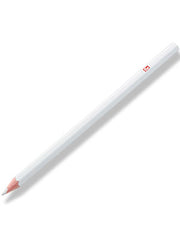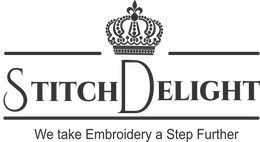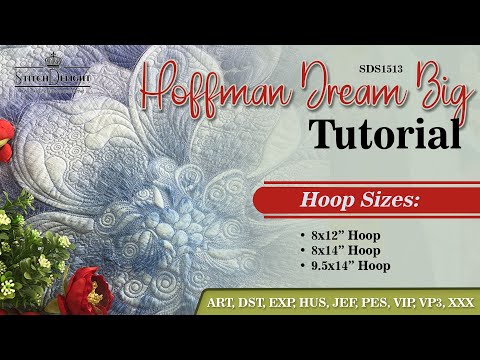Fabric markers are an indispensable notion for any sewing room. Exploring the wide range of available markers, we will delve into their benefits and drawbacks.
-
Water Erasable Markers: Benefits: These markers are easy to use and provide clear and visible marks on fabric. They can be easily removed by water or a damp cloth. Disadvantages: The marks may fade over time or if exposed to moisture, so they are not suitable for long-term projects.
-
Air Erasable Markers: Benefits: These markers create temporary marks that disappear on their own over time (typically within 24-72 hours), without the need for water or any additional erasing. Disadvantages: The marks may disappear sooner than desired, making it important to complete the sewing or quilting project within the timeframe.
-
Heat Erasable Markers: Benefits: These markers create marks that can be removed by applying heat, usually with an iron. They provide clear and precise lines. Disadvantages: It's crucial to test these markers on a scrap piece of fabric before using them, as some may leave residual marks or become permanent when heat is applied.
-
Pencils: Benefits: Pencils provide a familiar and versatile marking option. They are easy to use and offer good precision, especially for intricate designs. Disadvantages: Pencil marks can be difficult to remove completely, and they may not be as visible on darker fabrics.
-
Fine-Tip Fabric Markers: Benefits: These markers have a fine point that allows for detailed and accurate markings. They come in a variety of colors and provide long-lasting lines. Disadvantages: The ink in fabric markers may bleed or spread on certain fabrics, so it's advisable to test them on a scrap piece first.
-
Clutch Pencils: Benefits: Clutch pencils are similar to regular pencils but have a sharp point and don't require sharpening. They provide consistent lines and are easy to handle. Disadvantages: The lead may break more easily compared to traditional pencils, requiring frequent refills.
-
Chalk Markers: Benefits: Chalk markers create visible marks on fabric and can be easily brushed away or wiped off. They work well on dark-colored fabrics. Disadvantages: Chalk marks may smudge or fade with handling or exposure to moisture, making them less suitable for long-term projects.
-
Tracing Wheel: Benefits: Tracing wheels have spiked wheels that transfer marks from a pattern or template onto fabric by pressing down. They provide accurate and visible lines. Disadvantages: The marks made by tracing wheels are usually indented, so they may not be suitable for delicate or lightweight fabrics.
Remember to always test any marking tool on a scrap piece of fabric before using it on your project to ensure it works well with the fabric type and can be removed satisfactorily.
Now that we know what types are available, lets look at brands.
Some of the most well known marker brands in the fabric industry include:
- Clover
- Dritz
- Fons & Porter
- Bohin
- Prym
- Sewline
I personally love the Prym brand and its widely available here in South Africa from most Quilt and Fabric Shops.
Water erasable markers comes in pencil and felt tip styles, and in Blue, White and Purple for different color fabrics. Easily removable with water







Machine Embroidery:
- Marking Placement: Fabric markers are used to mark the desired placement of embroidery designs on the fabric, ensuring precise alignment and positioning.
- Design Tracing: Before transferring a design onto the fabric, fabric markers can be used to trace or draw the design directly onto the fabric, serving as a guide for embroidery.
- Stitching Guidelines: Fabric markers are helpful for drawing stitching guidelines or boundaries, assisting with accurate stitching and ensuring consistent spacing between elements.
Quilting:
- Patchwork Placement: Fabric markers are used to mark and indicate the placement of patches or blocks within a quilt pattern, ensuring correct arrangement and alignment.
- Quilting Designs: Fabric markers can be used to draw or trace quilting designs onto the quilt top, serving as a guide for free-motion quilting or following a specific quilting pattern.
- Seam Allowances: Marking fabric with specific seam allowances using fabric markers helps maintain consistent stitching lines and facilitates precise piecing when sewing quilt blocks together.
In both machine embroidery and quilting, fabric markers play a crucial role in providing guidelines, ensuring accurate placement, and enhancing the overall quality and precision of the finished project.
As these are small items that can easily go lost, I utilize one of my small drawers shown in one of the previous blog posts where we discussed contained, which I will link HERE to store all my markers in.
In our next installment of Getting Organized, we will discuss, various rotary cutters, and trim tools for detail cutting as well as rulers and why they are a much needed tool in your sewing room.










1 comment
Barb Flowers
I would like to say that I love the chalk markers very much. I use the white chalk all the time. I have had great difficulty removing the yellow chalk and it stains on light color fabrics and cannot be easily removed from dark. I have tried most everything I know to remove the yellow chalk.
Did you know that the Friction pen markings can reappear if you put the item in the freezer. I found this out when I left my quilt in the car in the winter time. Just thought you might like to know.